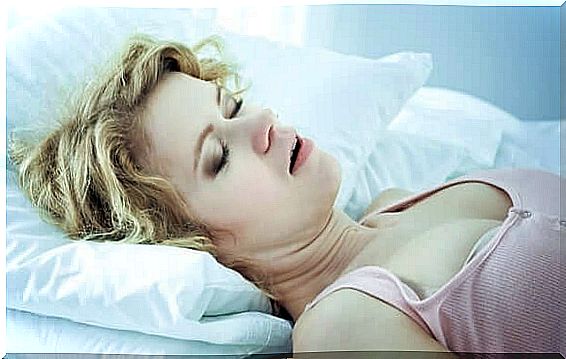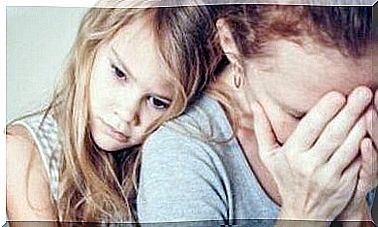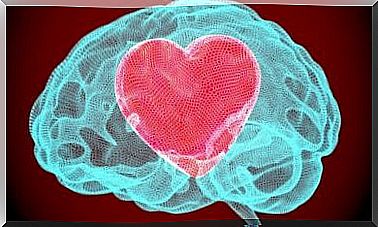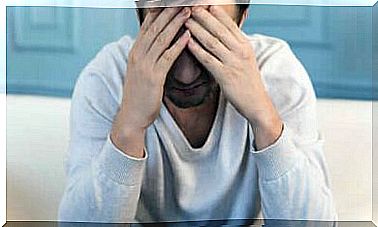Atypical Depression, Learning To Recognize It

Despite its definition, atypical depression is a fairly common disorder. It shares features with major depression, but differs from them in some specific symptoms.
If you suffer from atypical depression , you can experience positive feelings about your surroundings, have a good appetite and, at the same time, feel a feeling of great heaviness in the legs and arms.
The clinical history of atypical depression
The clinical term first appeared in the 1950s. Its definition followed an almost random path: many psychiatrists had observed that some patients, who had been diagnosed with depression, did not respond to ordinary antidepressants.
By analyzing these patients more carefully, they tried to identify the common factors and understand what was the peculiarity of this depressive disorder.
The first symptom they observed was that all patients had pain in the arms and legs. As reported by the patients themselves, they all seemed to have an enormous difficulty in movement, because the extremities appeared very heavy.
These people also had other atypical symptoms than major depression, such as hypersomnia or hypergafia, sleeping and eating to excess, respectively.
In most cases, the mood of people with atypical depression worsened in the afternoon; while in the morning they were able to respond positively to praise, they appreciated the visits and were able to participate and respond to certain stimuli.
After collecting enough data and defining common symptoms, psychiatrists were able to describe this other type of depressive disorder and called it ‘atypical depression’.
From that moment on, and taking these factors into consideration, adequate pharmacological treatments were developed. Indeed, many psychiatrists believe that about 20% of depressions are actually cases of atypical depression. These patients need a unique psychological and pharmacological approach. Let’s see it in detail.

Atypical depression: symptoms and characteristics
From a clinical point of view, clinical studies conducted by Jonathan RT Davidson of the University of California indicate that biological and vegetative symptoms are the most evident in atypical depression. The patient mainly complains of physical pain, fatigue and physical weakness.
In light of this, in many cases this disorder is misinterpreted, making it difficult to diagnose. The patient may think that all of his symptoms are caused by extreme fatigue from work, not sleeping well, or even poor nutrition or lack of physical activity.
The Diagnostic and Statistical Manual of Mental Disorders (DSM-V), however, has already reported in previous editions that atypical depression is a persistent condition; therefore, if help is not sought or a correct diagnosis is not formulated, it can lead to very debilitating psycho-physical states.
Let’s now see what are the most evident characteristics of this psychological condition.
1. The mood reacts to positive stimuli
One of the main characteristics of major depression or dysthymia is the total inability to react to positive situations or stimuli. The person cannot have fun, feel happy, or feel good.
In the case of atypical depression, however, the patient is able to experience small moments of positivity, for example when he receives a welcome visit or when someone encourages or praises him.
2. Anxiety, nervousness, restlessness and distrust
Atypical depression most often occurs alongside other psychiatric disorders, such as anxiety or bipolar disorder.
This means that the most common symptomatology, which highlights this condition, is characterized by nervousness, hypersensitivity, constant feeling that something bad is about to happen, etc.
We also note the difficulty of maintaining happy or stable love relationships. The subject is perpetually suspicious and exhibits an extreme sensitivity to criticism and a panic of betrayal and abandonment.
3. Lead paralysis
With ‘leaden paralysis’ is defined the
. It is an intense fatigue that is concentrated in the extremities, to the point of feeling pain, and having obvious mobility difficulties.
4. Hypersomnia
Excess sleep is another obvious symptom of atypical depression. The person sleeps excessively, even during the day, gets up late in the morning and has obvious difficulties with productivity at work.
Likewise, it doesn’t matter how many hours you sleep, because the fatigue is permanent and you don’t feel like you have regained strength or energy.

5. Great appetite
Furthermore, anxiety and nervousness push the person towards another disorder, hyperphagia, or excess appetite, which is practically constant. It is a hunger that is not satisfied and that forces an almost compulsive ingestion of food.
What is the cure for atypical depression?
According to Cristancho, O’reardon and Thase (2012), atypical depression is a chronic disorder, more common in young women, and is the most common form of depression for which doctors go to clinics.
When a person does not receive adequate treatment and, in addition, has other disorders such as anxiety or bipolar disorder, more severe pictures or suicide attempts can occur. It is very important to always keep this in mind.
As for the intervention strategies for the treatment of atypical depression, it must be emphasized that these will depend on the specific case of each patient.
In general, many women who seek specialist advice are also affected by an eating disorder, such as bulimia.
However, it must be emphasized that through psychological therapy and adequate drug treatment, the patient’s quality of life can be substantially improved. Cognitive-behavioral therapy allows you to work on some ideas, focus on some concepts and behaviors to improve social competence in everyday life.
Likewise, treatment with monoamine oxidase inhibitor (MAOI) antidepressants has been shown to produce dramatic improvements.
To conclude, we just want to underline one more detail. Atypical depression is more common than we think and usually appears at a young age (around the age of 20).
If you intervene in time, the person affected by this disorder will have the opportunity to gain greater control over their condition, have the appropriate strategies available to be happy and continue their life with greater safety.









